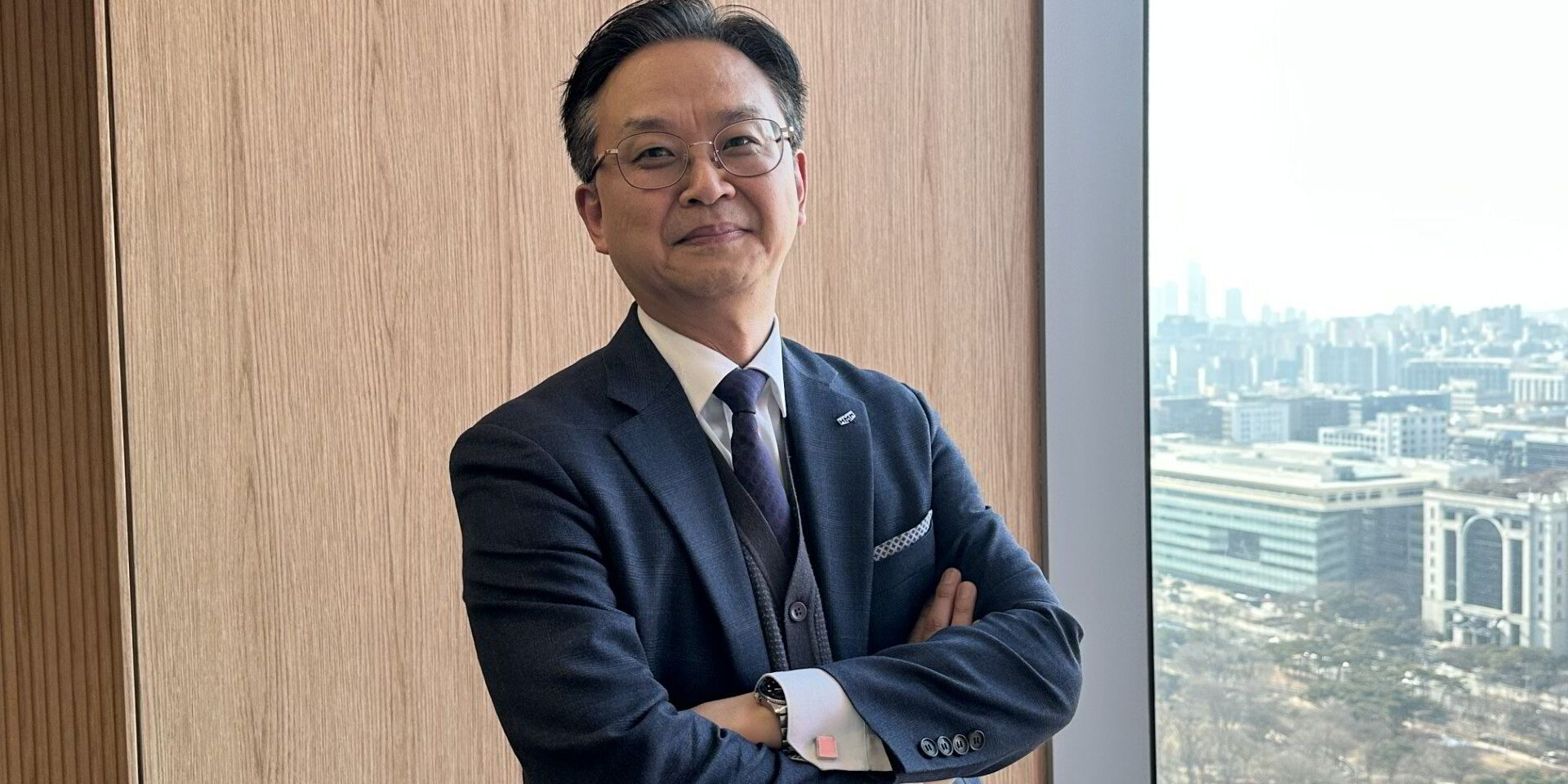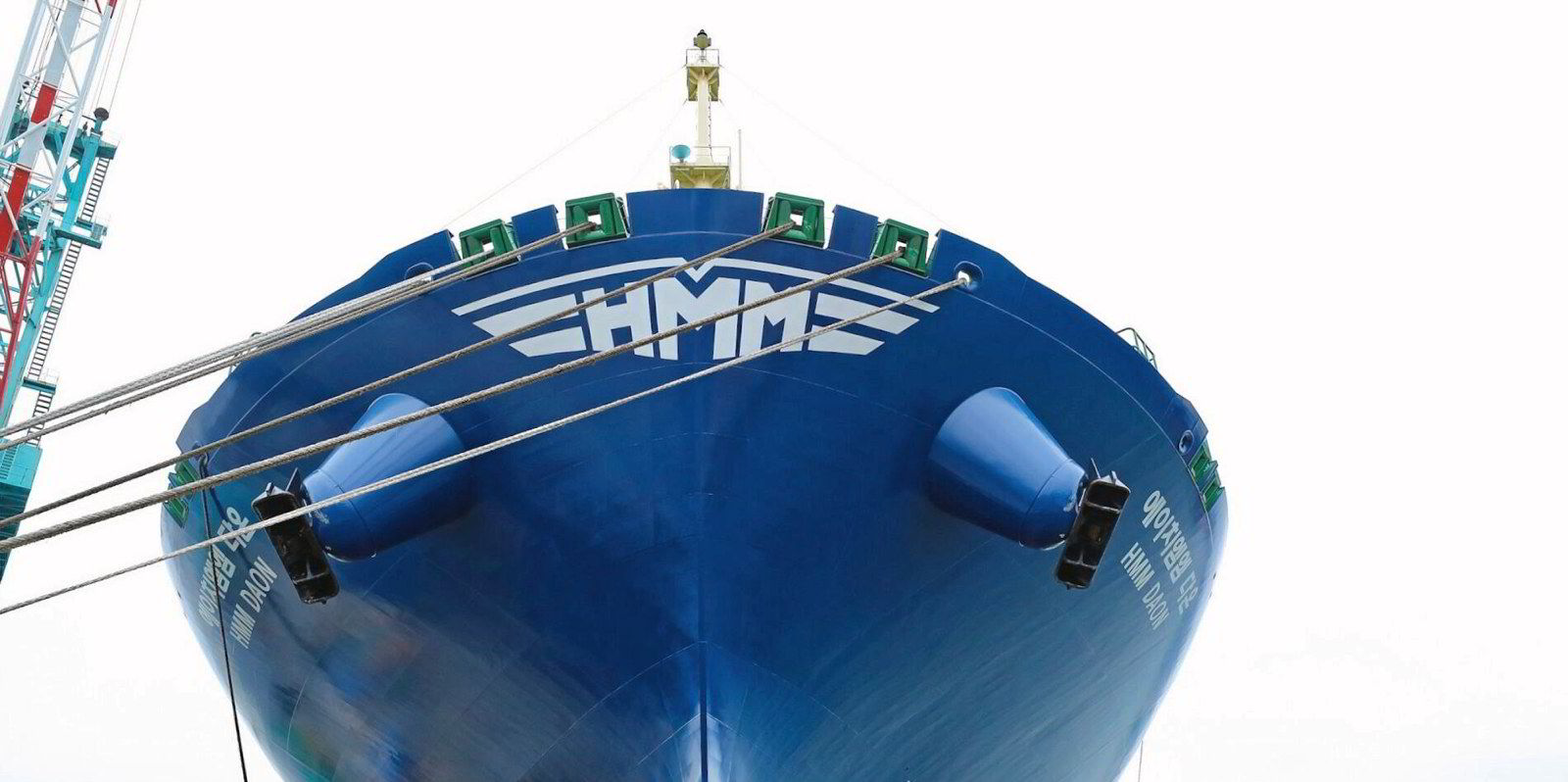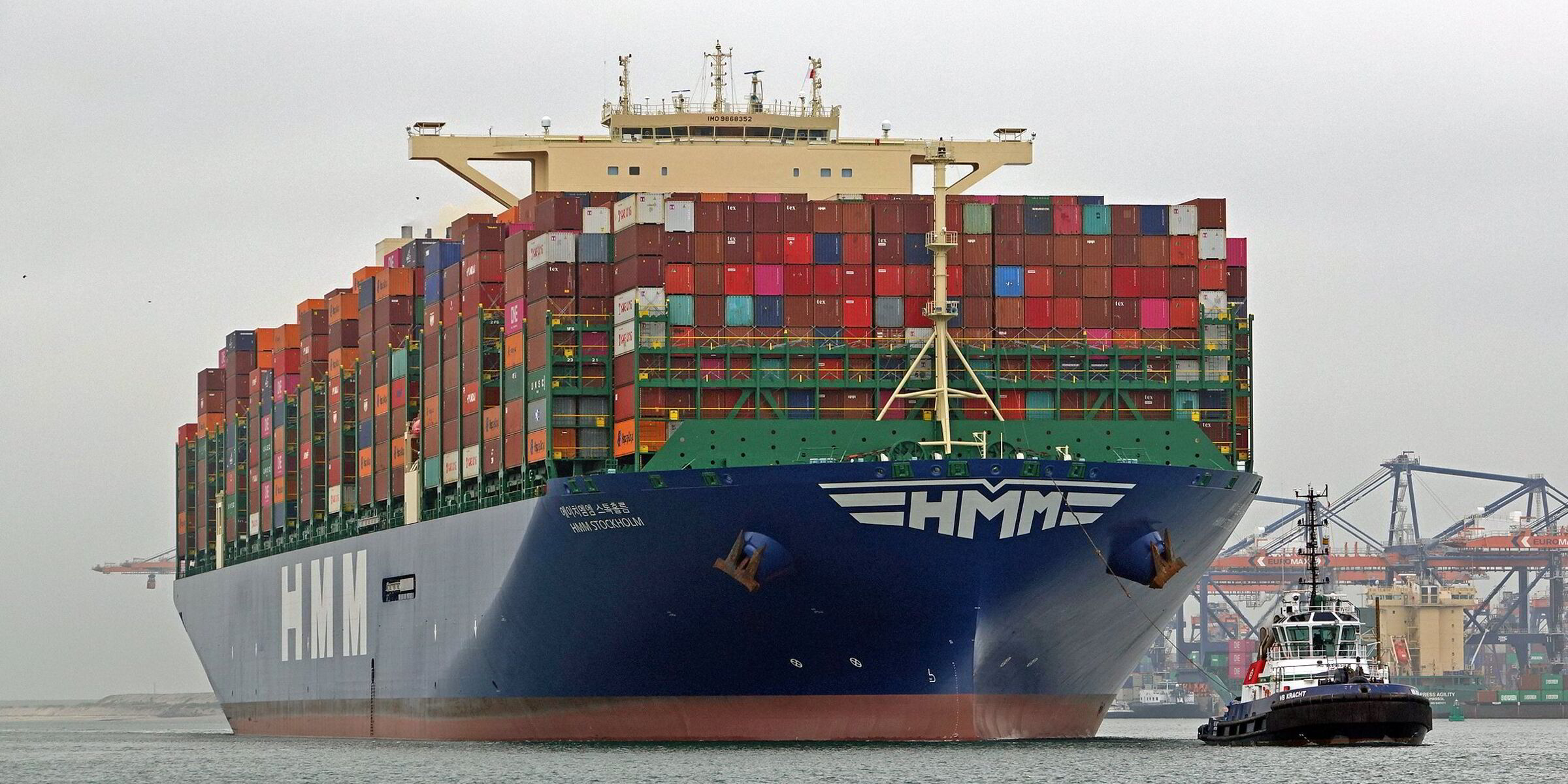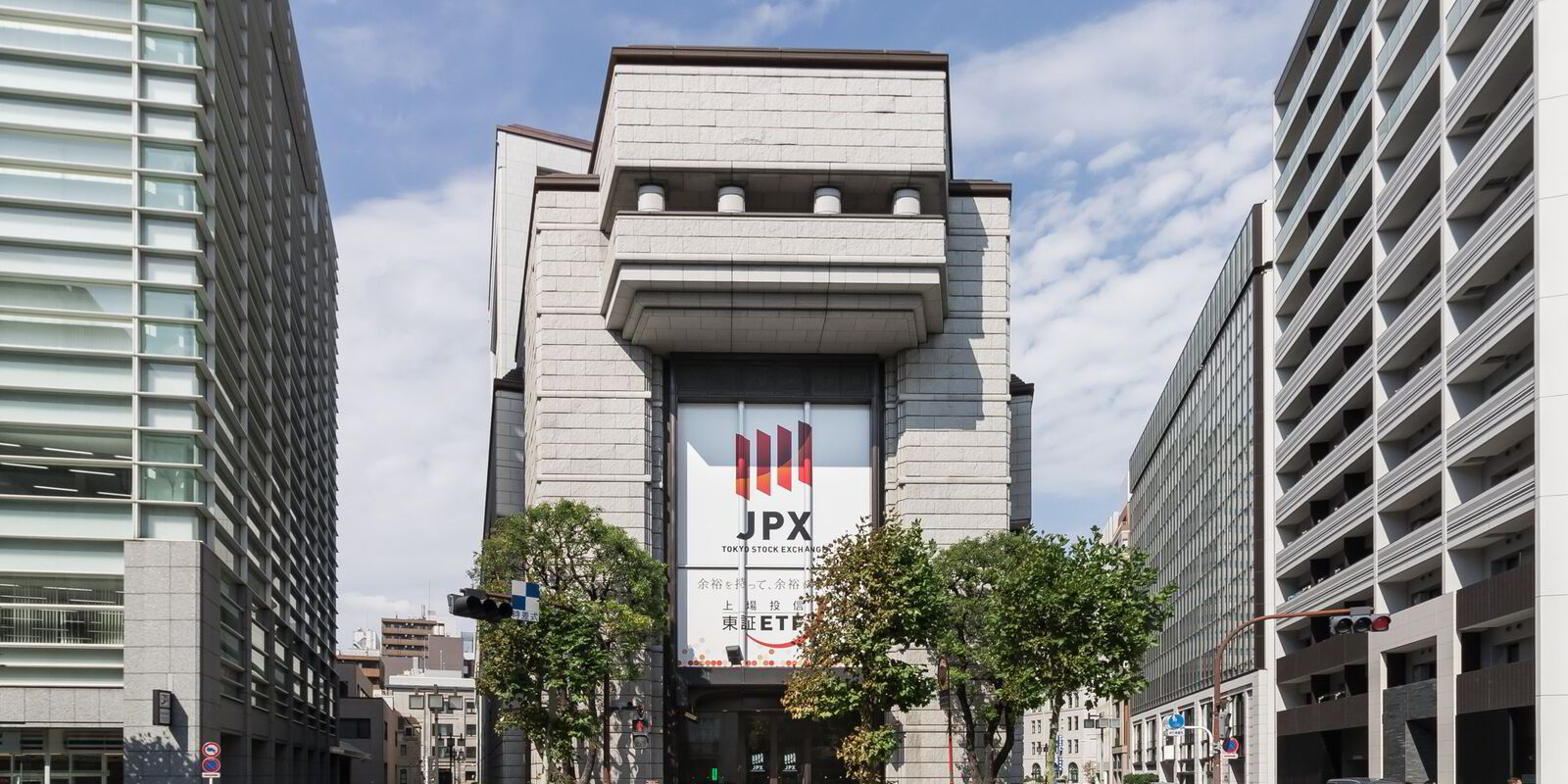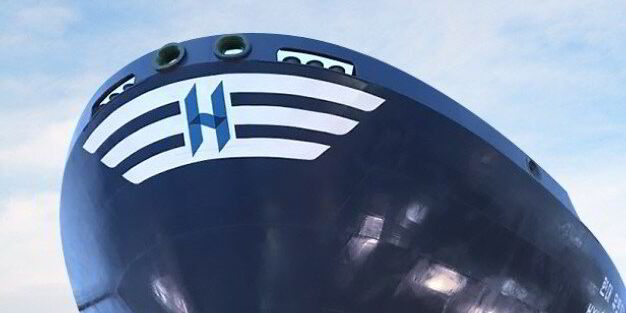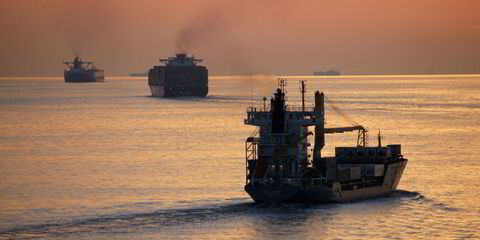South Korea’s HMM is looking to order container ships after growing its fleet by around 50% through the acquisition of compatriot SK Shipping.
The SK expansion will primarily involve tankers and bulk carriers, as SK Shipping does not operate in the liner business.
To further strengthen its container shipping business, HMM plans to invest $13.5bn by 2030. This investment will be used for placing new orders, upgrading existing terminals and acquiring additional containers.
Hahn & Co, the owner of SK Shipping, selected HMM as the preferred bidder. SK Shipping currently operates a diverse fleet of about 62 vessels, including 14 LNG carriers.
When asked by TradeWinds if HMM would pursue mergers or acquisitions of domestic liner companies to strengthen its container business, Jay Y Lee, HMM’s executive vice president and head of the container business unit, said: “This would depend on HMM’s shareholders, who are affiliates of our government.”
Lee indicated that horizontal growth through mergers is unlikely, noting: “Our government does not want to interfere with the country’s shipping industry, and these container shipping companies are privately owned.”
As a state-owned entity, HMM’s major shareholders are government-controlled Korea Development Bank and Korea Ocean Business Corp.
Newbuilding specs
Lee declined to disclose the size of the new container vessels HMM will be ordering but mentioned that they will come in “mixed sizes” to meet customer demands.
“We are a member of Premier Alliance, and my idea is to have the same size of ships as our other members so that the fleet will be compatible,” said Lee.
He believes that boxships ranging from 10,000 teu to just under 16,000 teu offer the greatest flexibility for global trade, as they can access a wide range of ports and markets.
Looking ahead, HMM has committed to achieving net-zero emissions by 2045.
The company aims to secure around 70 low and zero-carbon ships and achieve carbon neutrality on all its routes. To meet these ambitious goals, Lee noted that HMM is exploring alternative clean fuels for its future newbuildings.
“We are in the same position as AP Moller-Maersk on methanol fuel,” said Lee.
Fuelling options
“We have regular meetings with oil companies to discuss the supply of methanol, but understand [supplies of] green methanol and methanol bunkering ports are limited.
“At the same time, the technology of LNG fuel engines has vastly improved and if we are to use LNG, the methane slip will be minimal.”
Lee does not rule out that LNG may be the fuel choice for its batch of newbuildings.
To further minimise its carbon footprint, HMM is exploring the implementation of an onboard carbon capture system to capture emissions from the ship’s exhaust.
“We have carbon capture devices [installed] in a couple of ships that are under test. We are collating the findings at the end of this year,” said Lee.
HMM recently took delivery of its first dual-fuel container ship — the 9,000-teu HMM Green (built 2025).
The Hyundai-built ship is the first of nine newbuildings — seven at HD Hyundai Samho and two at HJ Shipbuilding & Construction — that the liner giant ordered in 2023.
The HMM Green is being deployed on HMM’s independently operated FIM (Far East Asia, India and the Mediterranean Sea) service.
The remaining eight vessels are set to join the HMM Green fleet upon delivery, with some arriving this year and the rest in 2026.
Lee told TradeWinds that these methanol dual-fuelled vessels will eventually be deployed for the potential green shipping corridors trade between South Korea and key US ports in 2027.
The 9,000-teu dual-fuelled container ships are part of the company’s steps towards carbon neutrality.
Premier Alliance
HMM, Yang Ming Marine Transportation and Ocean Network Express formed a new alliance last year when Hapag-Lloyd left THE Alliance.
Premier Alliance, which will be in effect for five years, officially started in February.
The cooperation covers mainline services along key East-West trade lanes, including Asia-North America West Coast, Asia-North America East Coast, Asia-Mediterranean, Asia-Northern Europe, and Asia-Middle East.
Asked if Hapag-Lloyd’s absence would cause any void for the partners, HMM’s Lee said that he did not see any shortcomings, as the number of ships contributed by the German owner was limited.
“To overcome a shortfall of vessels, we are working with MSC Mediterranean Shipping Co on the Mediterranean and North Continental trade, and cooperating with CMA CGM for the transatlantic trade,” said Lee.
“We don’t see any handicap or rising problems for Premier Alliance.”
Lee added that the decision-making process seems to be better and more efficient with three members instead of four.
“When it comes to decision making, it is shorter,” he said.
Lee said the container ships provided by members of Premier Alliance are relatively young, which would help to boost fleet efficiency and improve service reliability and competitive pricing.
“Yang Ming and ONE have invested in new vessels of 13,000 teu and 16,000 teu, while HMM have 12 ships of 24,000 teu and eight of 16,000 teu,” he said.
“The average age of HMM’s vessels is about five years, as they were delivered in 2020.”
Alphaliner ranked HMM as the world’s eighth-largest liner operator with 88 ships and a fleet capacity of around 922,000 teu.(Copyright)
